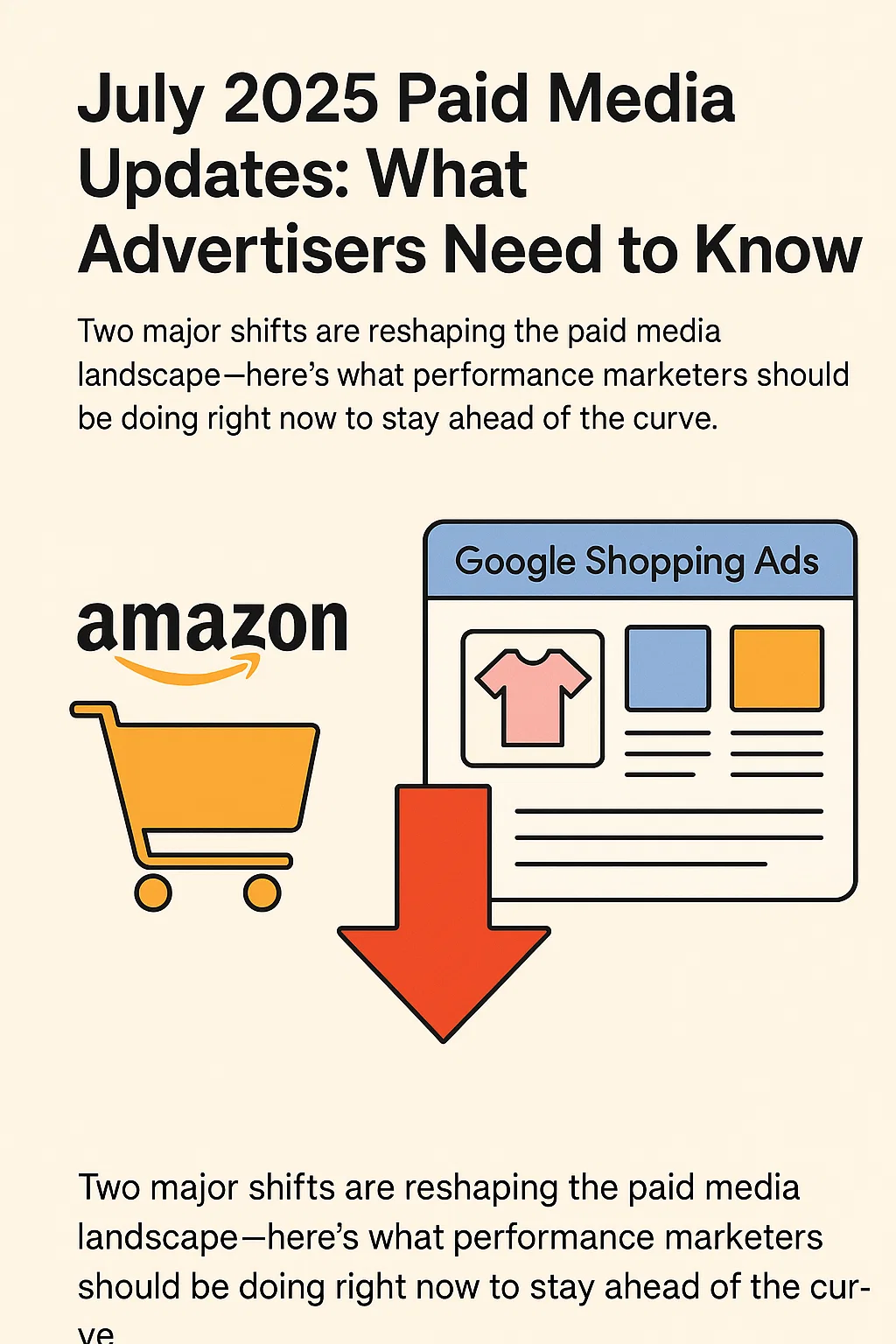
The Power Duo: Integrating Google and Meta Ads for Full-Funnel Success in
 by Art Lindop
by Art Lindop
Wednesday, February 5, 2025
Let’s face it—advertising today isn’t as simple as choosing one platform and hoping for the best. In 2025, the most successful campaigns are the ones that think bigger, bolder, and more strategically. Google Ads and Meta Ads aren’t just powerful on their own; together, they’re an unstoppable duo. If you’re not using both to their full potential, you’re leaving money on the table.
Here’s the thing: Google and Meta shine at different stages of the customer journey. Google grabs those high-intent users actively searching for solutions, while Meta works its magic at the awareness and consideration stages, where it builds excitement and trust. When you combine them, you’ve got a full-funnel powerhouse that takes your audience seamlessly from “Hmm, interesting” to “Take my money!”
So, how do you make this power duo work for you? Let’s break it down.
Why Google and Meta Work Better Together
First, let’s look at why these platforms complement each other so perfectly:
- Google Ads: Think of Google as the precision sniper in your strategy. It’s fantastic at capturing intent—when people are actively searching for solutions, your ad pops up at the perfect moment. It’s your go-to for conversions and bottom-of-the-funnel wins.
- Meta Ads: Meta is your creative storyteller. It’s all about building buzz, telling your brand’s story, and keeping your audience hooked. Perfect for awareness and consideration, it primes potential customers to fall in love with your brand before they even start searching.
Together, they create a seamless flow: Meta makes your audience aware of your brand and excited about what you offer, while Google swoops in to close the deal when they’re ready to take action.
How to Build a Full-Funnel Strategy with Google and Meta
Let’s map out how these platforms can work together at every stage of the customer journey:
1. Awareness: Meta’s Moment to Shine
At the top of the funnel, the goal is simple: get noticed. Meta’s advanced targeting and engaging ad formats make it the ultimate tool for capturing attention.
- Creative Ideas: Sure, eye-catching videos and carousel ads work wonders, but are you using Meta’s latest Dynamic Creative tools? These allow you to automatically test combinations of images, headlines, and CTAs to discover what resonates best.
- Smart Targeting: Beyond lookalike audiences, use Meta’s Advantage+ Audience feature to let AI find hidden audience gems that manual targeting might miss.
- Pro Tip: Pair your awareness campaigns with brand lift studies to measure how well your Meta campaigns are driving perception shifts.
2. Consideration: Double Down with Both Platforms
The mid-funnel is where the magic of integration starts to happen. At this stage, you’re nurturing interest and helping your audience see why you’re their best choice.
- Meta’s Role: Retarget users who interacted with your awareness ads. Try sequential storytelling ads, where each ad tells a piece of your brand’s story to deepen engagement.
- Google’s Role: Combine the Display Network with Smart Bidding strategies to stay front and centre for users browsing the web. Use Custom Intent Audiences to target people based on their search behaviour and interests.
- Pro Tip: Don’t forget YouTube! Google’s video platform is a fantastic mid-funnel channel. Use YouTube’s TrueView for Action ads to drive consideration with engaging call-to-action overlays.
3. Conversion: Google Takes the Lead
This is Google’s sweet spot. When someone’s ready to buy, Google makes sure your product is the first thing they see.
- Search Ads: Move beyond basic keywords. Use Google’s Performance Planner to forecast and optimise budgets for top-converting campaigns. Leverage Audience Segments to layer in demographic or in-market targeting for ultra-precise results.
- Shopping Ads: Use Smart Shopping campaigns to automate product bids across Google’s ecosystem. Layer this with promotional extensions to highlight discounts or special offers.
- Pro Tip: If you’ve already maxed out your conversion campaigns, test Google’s new Demand Gen campaigns to re-engage potential buyers with highly visual ad formats across YouTube, Discovery, and Gmail.
4. Loyalty and Retention: Close the Loop
Post-purchase is where Meta and Google help you build lasting relationships. Because a loyal customer is worth their weight in gold.
- Meta: Go beyond dynamic product ads. Use Meta’s Advantage+ Custom Audiences to create ultra-tailored retargeting ads based on purchase behaviour. Offer VIP exclusives or sneak peeks to keep customers engaged.
- Google: Use Performance Max for re-engagement campaigns, targeting customers with upsell and cross-sell opportunities. Personalised YouTube “thank you” ads can leave a lasting impression.
Best Practices for Mastering Google and Meta Integration
To get the most out of your combined strategy, here’s what you need to keep in mind:
1. Sync Your Messaging
Consistency is key, but so is platform-specific optimisation. For instance, your Meta ad might use a conversational tone with bold visuals, while your Google Search Ad zeroes in on urgency with scarcity-driven CTAs like “Limited Stock!”
2. Follow the Data—and Act on It
Meta’s Ad Manager now provides Cross-Platform Insights, helping you track how audiences move between Instagram, Facebook, and beyond. Pair this with Google Analytics’ GA4 reports to get a full view of your cross-platform performance.
3. Budget Smarter, Not Harder
The latest Meta and Google algorithms reward consolidated campaigns. Instead of spreading budgets thin, focus spend on fewer, high-performing campaigns. Google’s new Budget Pacing insights can also help ensure your spend aligns with performance targets throughout the month.
4. Maximise First-Party Data
With privacy updates changing the game, your first-party data is more valuable than ever. Use Meta’s Conversions API and Google’s Enhanced Conversions to integrate offline and CRM data, improving targeting accuracy and attribution.
5. Test Advanced Strategies
If you’ve nailed the basics, go deeper. On Meta, try Augmented Reality ads to create interactive experiences. On Google, experiment with Discovery campaigns for visually rich, intent-driven ads that inspire action.
Looking Ahead: The Power of Integration in 2025
2025 is the year of smarter, more integrated advertising strategies. Google and Meta are no longer competing forces—they’re teammates in your mission to grow your business. By using their strengths together, you can guide your customers through a seamless journey that builds trust, drives action, and keeps them coming back for more.
At Alphageek, we live and breathe full-funnel strategies. We don’t just connect the dots; we innovate at every stage. So, are you ready to take your campaigns from good to great?
Let’s chat. Reach out today, and let’s build a strategy that sets you up for success in 2025 and beyond.


